Blackwork is a tattoo genre with a wide variety of styles incorporated. It’s mainly characterized by the use of only black, pure ink for all elements of the tattoo’s design.
Depth is created by adding finer lines, different thicknesses, dotwork or alternative types of shading.
Not all tattoo studios are up to this kind of work, so make sure to get the right artist for your body art. We’ll try to answer all questions in this post, if you have more, hit the comment section!
Table of Contents
Tribal tattoos: blackwork's true roots
The art of blackwork tattoos as we know them today, stems from the ancient times when polynesian tribal tattoos were the main thing.
James Cook's influence
In order to understand modern blackwork tattoos we’ll have to go back in history. Back in the times of James Cook. If it wasn’t for Captain Cook, who knows what our Western tattooing culture would be like now, if any.
The etymology: lost history
The explorer was introduced to the practise of tattooing during his first trip to the Tahitian islands, going from 1768 ’till 1771. Upon arriving, he naturally had encounters with the native Tahitian/Polynesian tribes. Cook and his men were in awe, shocked, upon meeting the heavily covered in ink natives.
As Pope Hadrian banned the act of tattooing roughly a millennium prior to James Cook’s ‘discovery’, tattoos and body art were simply non-existent in the Western culture.
The indigenous folk were covered with the pitch-black ink to express a variety of things, such as values, spirituality, war victories, identity or social ranking. You could identify a person by simply looking at a pattern on their ink-engraved body art. Or what we today call, tribal and maori tattoos.
The Captain for the British Royal Navy documented his sights in his journals. The word he used? Tattoos. That was and still is, the earliest written use found of the term ‘tattoo’ as we define it today. Literally translated from the Tahitian word ‘tatau‘, it means to mark.
Tatau had been in use for centuries, and it has been speculated that the term ‘tattoo’ with the definition ‘to mark’ had been used 150 years prior to Cook’s documentation of the term.
The connection? Well for starters, both terms sound similar. Since ‘tattoo’ already existed in the English language it only made sense.
But if we want to dig deeper, the main definition and usage of ‘tattoo‘ back then was to describe the brisk, rhytmic knocking known as the military term ‘taps’. The taps’ rythmic beats that are now used during military funerals, ceremonies and memorials were originally meant for the infantry. That was the call that alerted them to extinguish their lights and go to sleep.
Cook compared that sound with the sound of the inking process by the tribesmen, so logically he figured it’s a perfect substitute.
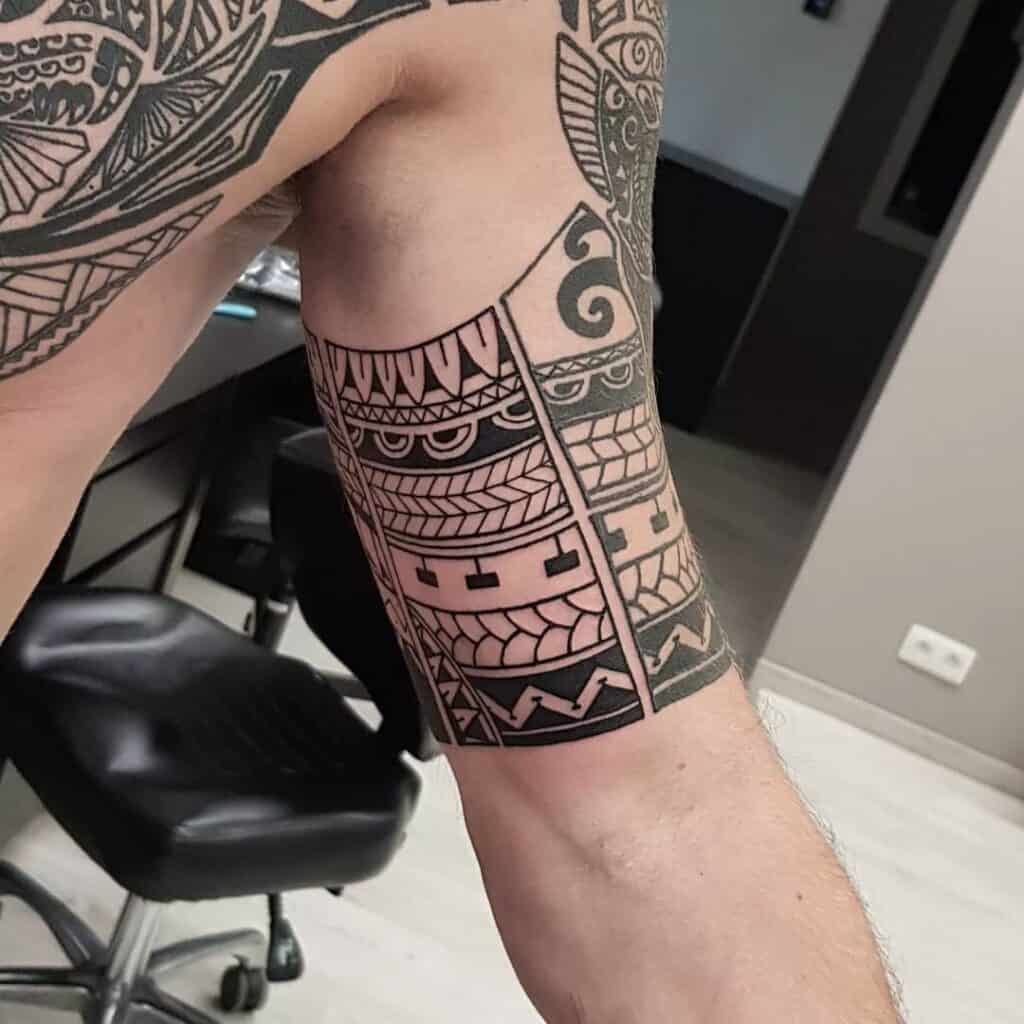
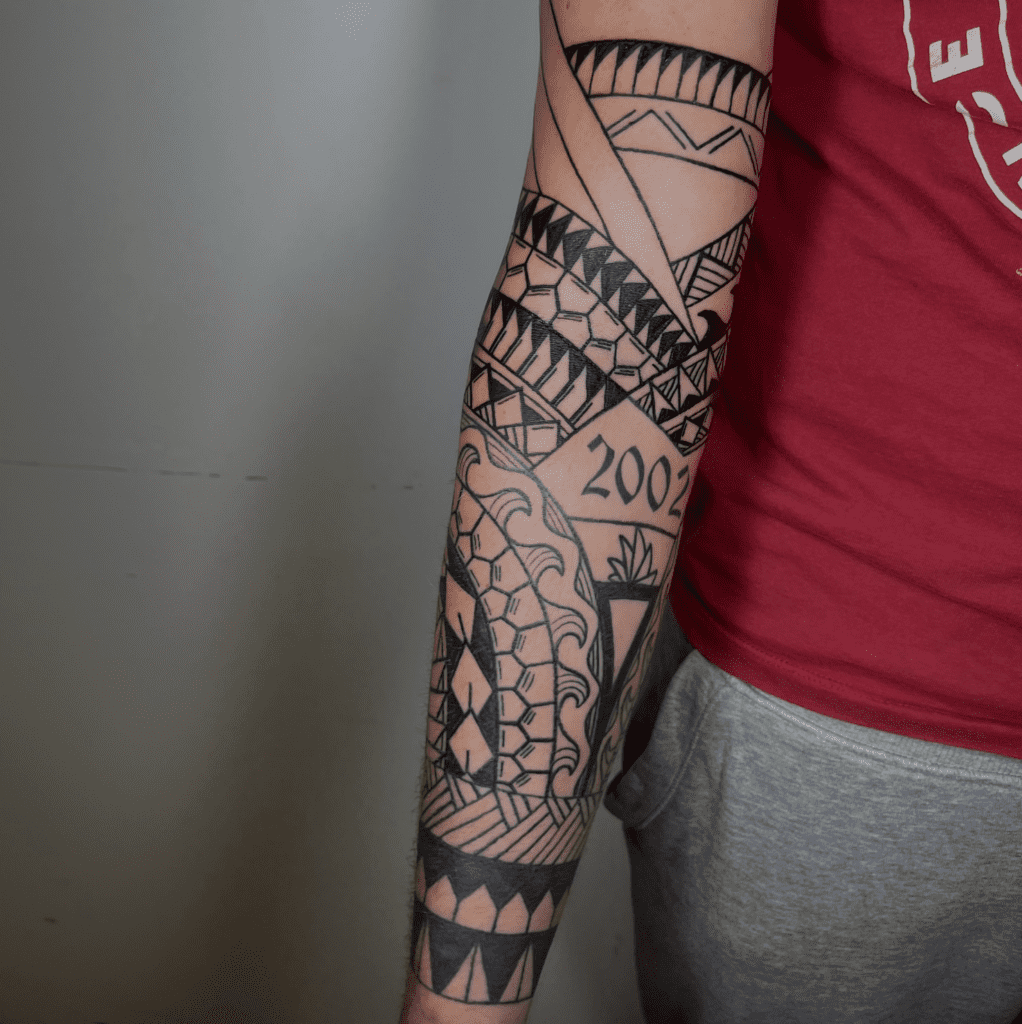
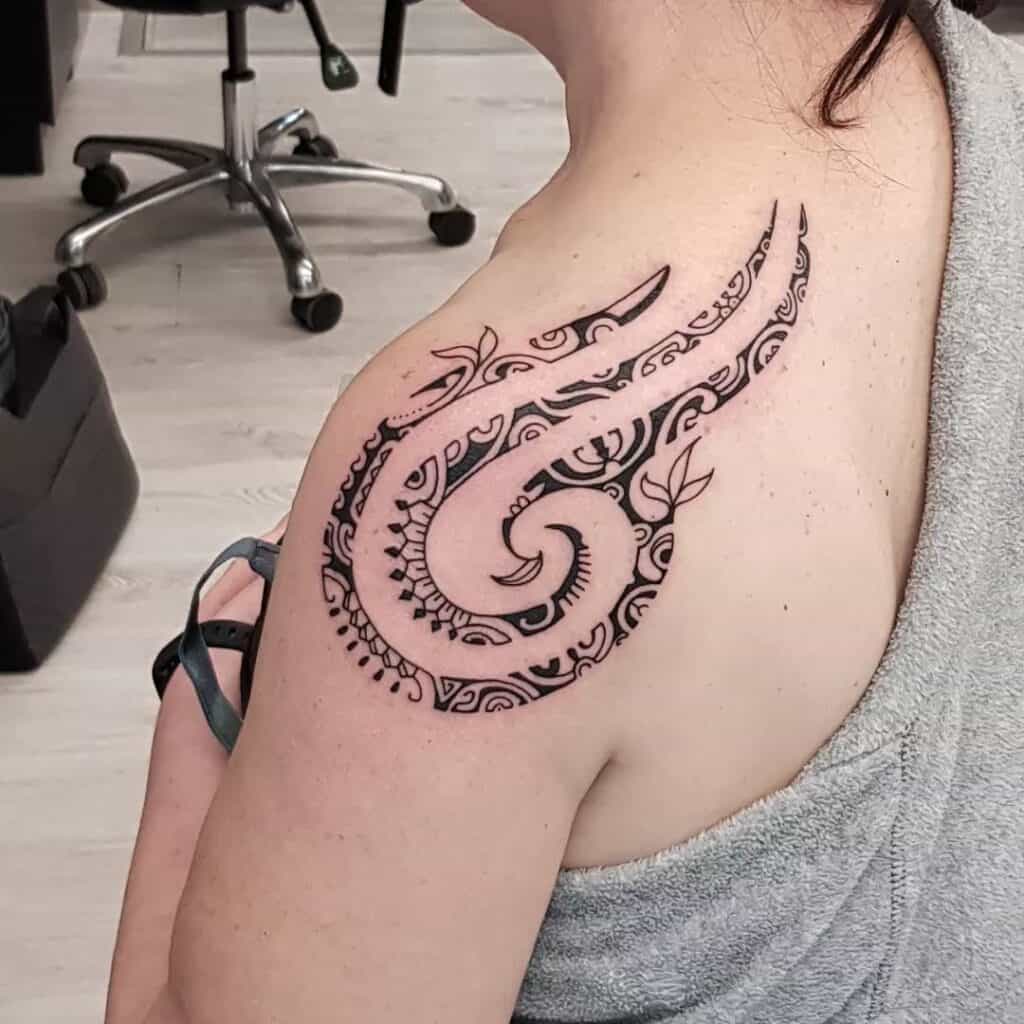
Cook returns home
Although he already used the term tattoos back in 1769 to document what he saw, the Western society didn’t hear about any of it until 1771 when he returned with his men.
Needless to say, his journals gained popularity very quickly thanks to the tales of the heavily inked tribes and astounding details about their body art.
Little by little sailors started returning home with some body art of their own as a tribute to their voyages. Not something to brag about but, some even returned with inked natives onboard. Coal-miners together with sailors were also one of the first society members to get some art inked on them.
Modern times
The blackwork tattoos have since evolved and more blackwork tattoo genres have flourished. This is commonly interspersed with finer linework, dotwork, or a special shading. There are endless possibilities because different line thicknesses, shading techniques and sizing can be used. Designs can be very simple or highly complex.
Our explanation for the popularity of the evolved blackwork tattoos is: the versatility. The final results can be very striking and elegant, or the exact opposite!
Tribal tattoos today?
Tribal blackwork tattoos are still the go-to for full sleeves. A blackwork tribal tattoo is a type of tattoo that features large areas filled with black ink; repeating abstract patterns; geometric shapes and bold lines. Those are the left-over traits from the traditional tribal tattoos, so it’s a perfect match for those wanting to get a sleeve!
The difference nowadays is that those abstract patterns are modernised. Instead of following the strict rules of a traditional tribal tattoo, tattoo artists will often use other tattoo genres as inspiration, thus neo-tribal.
Tribal tattoos are often seen as ‘masculine’, rough and ‘aggressive’, but a blackwork tribal tattoo can also be quite ‘feminine’.
The best and well-known example we can give you is Dwayne ‘The Rock’ Johnson. He’s a proud owner of not only a tribal tattoo, but of another black ink masterpiece. A tribal blackwork tattoo on his left shoulder, chest and shoulder blade, and on his right arm the massive bull. But that’d be considered more ‘neo’blackwork as it’s got a lot of shading, diluted blacks and some white highlights.
Want to learn about the significance behind The Rock’s tattoos? Click me!
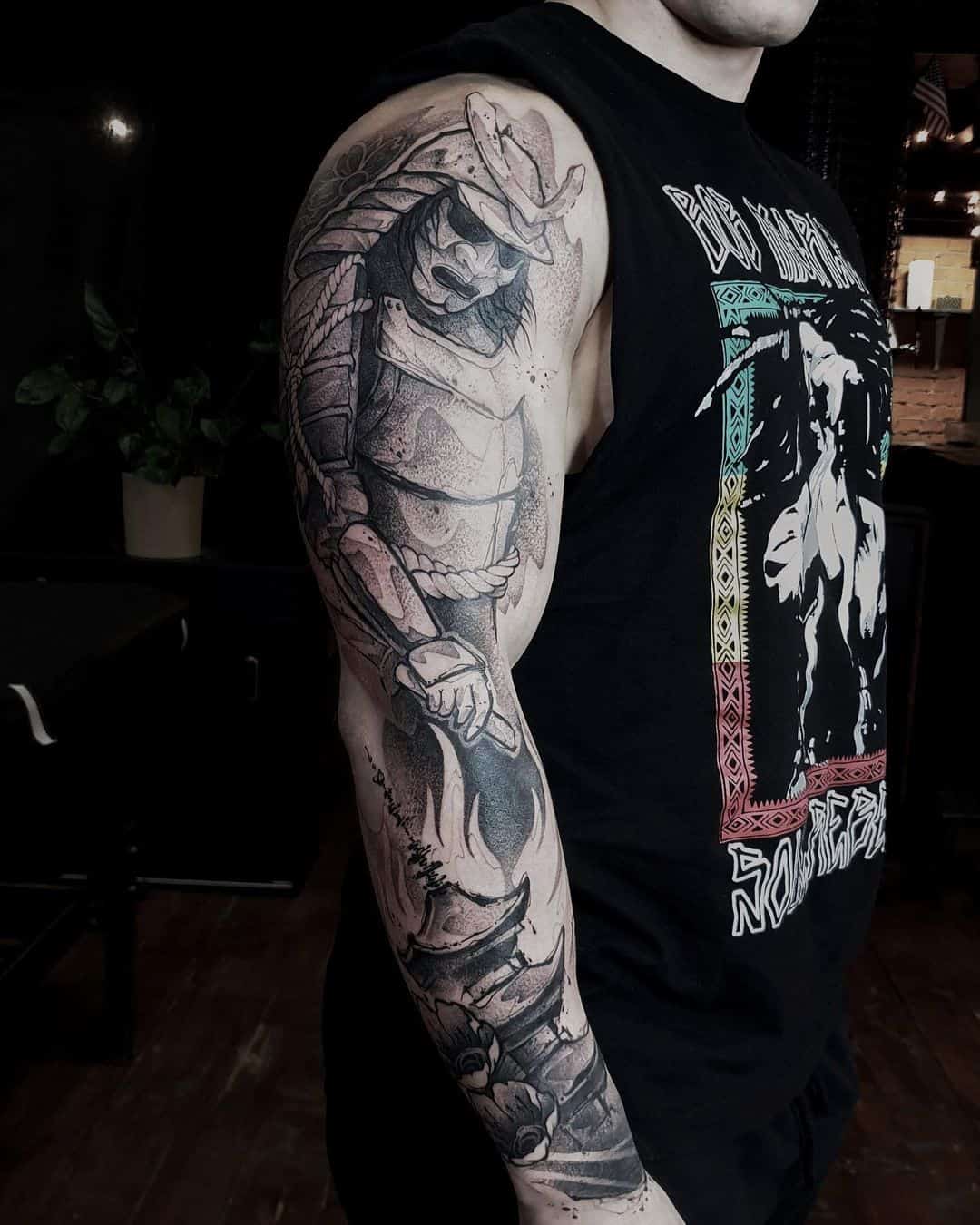
Blackwork tattoo designs
The dark side
Any design can be tattooed in the blackwork body art style. A lot of blackwork artists however, tend to go for the dark side of their imagination. Detailed monsters, death and macabre representations of animals, people or objects are common subjects.
The reason for this is the absence of color and “frivolity.” After all, black is linked to dark things in everyday life. However, not everyone who chooses this style needs to have a dark side: sometimes people choose these subjects simply because they like the aesthetic of it.
For the minimalistic folk
Nevertheless, if you prefer the polar opposite of that, you’re in luck! With time, the term ‘blackwork’ has broadened its meaning.
Many tattoo styles fall under the category of ‘blackwork tattoo style’ now. One of which, simply linework tattoos.
That can mean anything from etching tattoos, to single-needle tattoos and even old-school traditional blackwork.
Into geometric shapes?
If you’re into geometric shapes, once again, plenty of options to choose from! The obvious one, tribal tattoos. Maori, which falls under tribal, is another option.
But mandala’s and ornamental pieces are also amazing! The combination of these two makes for a really awesome sleeve.
Get inspired!
Here are some more blackwork tattoo ideas/suggestions that might be of help when you are craving that new ink and are left with no inspiration.
Something big and bold?
If you’re into back tattoos, a really great fit for you would be an ornamental back piece. Regardless of your gender and society’s ‘feminine’ label for it, those look awesome on anyone! Those designs are also great for the back of your neck.
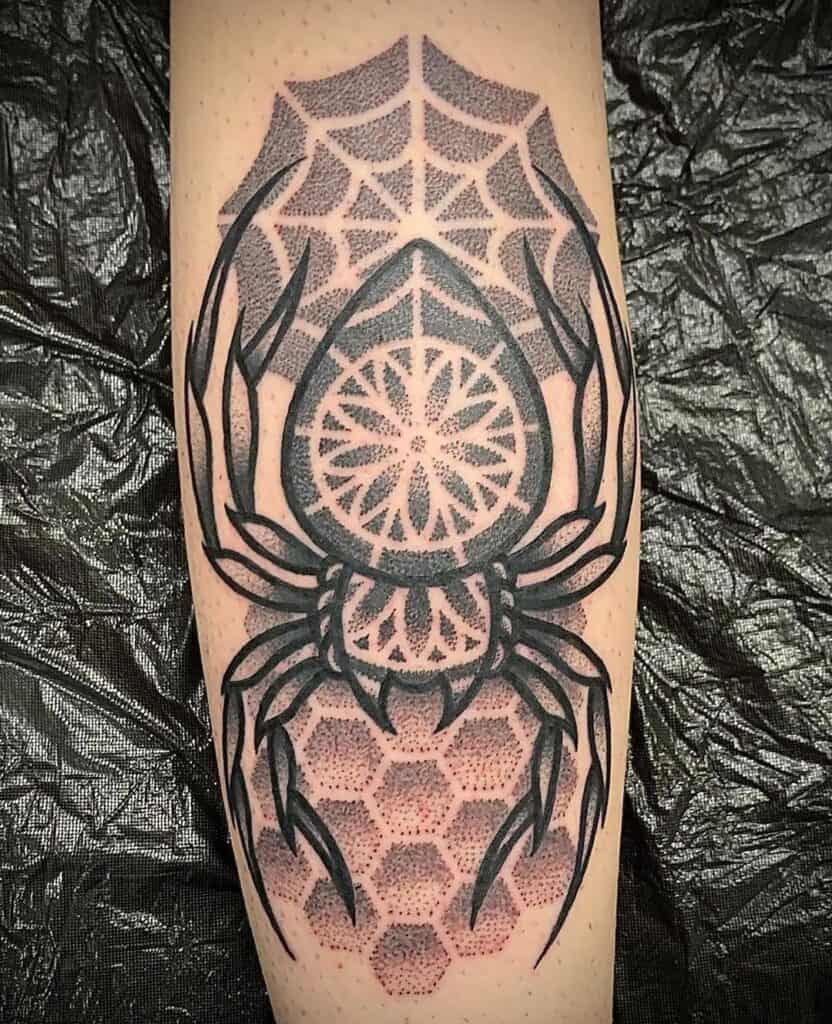
You like script tattoos? The most-common black lettering script also falls under this category. It’s the ideal option if you want to put a message out there. The bold lettering combined with other elements such as swirls, contrast and curves make up for a great complete blackwork masterpiece.
Another idea if you want to keep it more simple but ‘daring’: gothic old English font scripts. Those are one more form of blackwork body art.
If you want something more ‘bulky’: go for tribal or old-school blackwork. There is also neo-tribal nowadays which is sick if you dont like the traditional tribal tattoos.
Perhaps a coverup?
Need to cover an old tattoo? Well aren’t you in luck! Thankfully, blackwork tattoos are the perfect match for people that are sick of an old tattoo and can’t afford laser treatments. The bold work and black ink make for a perfect ‘black cover’.
Lots of people opt for American traditional blackwork or anything with a creepy touch to it. Since both of these examples require huge areas of darkness it adds-up perfectly!
Adventurous soul and personality?
Want to show your interest in exploring the world? Get a nature scene! Although nature is very naturally (no pun intended) colorful, a blackwork interpretation of it is an art form on itself.
FAQ
Well, a blackwork tattoo isn’t automatically expensive, but they can be depending on the tattoo artist and the complexity of the design. Usually they’re priced similarly to the other tattoo styles but may be marginally priced higher. That’s thanks to the time and skill required to master and get control over the blackwork art.
Summed up, the cost of a blackwork tattoo will depend on the individual artist and customer’s budget.
Since majority of the blackwork tattoo style is derived from old tribal traditions and tattoo practices, some people with native blood might get a bit offended. Others say they don’t mind because they see it as cultural appreciation. It all depends on your mindset. After all it is still a form of art and therefore a way of self-expression.
We think that as long as you do your research beforehand and put in the time and effort to learn about its cultural origins, there shouldn’t be a reason for anyone to get upset.
No, black tattoo ink does not turn green.
Well, all tattoos fade, so yes. But this also depends on how well you’re taking care of it. Are you a fan of sun-bathing? If so, you might want to forget about that if you want your new blackwork tattoo to last for as long as possible.
Keeping it moisturized will also help with preserving it, and if it’s looking a bit dull, shave the area (after it’s healed of course)! It’ll make your tattoo glow up instantly.
Since they’re made with black ink only, some people assume that they fade faster. That is false. Blackwork tattoos fade just as fast/slow as colorful ones. The reason people might think that is because colorful tattoos are PACKED with color with barely any skin showing through. With blackwork tattoos however, that’s another story. Empty areas of skin are left in order to create different tones of gray and therefore, shadows.
Since black ink fades to gray, you’ll notice the fading process immediately, unlike with colorful tattoos. That shouldn’t be a reason to stop you from getting blackwork artists do their thing on you though. The actual duration of fading is the exact same. Just make sure you take care of your art as instructed!
It can cost anywhere from $200 to $5000, depending on the size and complexity of the design. Some artists may charge more or less for their time and expertise, so it is always best to ask around or do your research before getting tattoos.
Summed up: yes. All tattoos hurt. After all there are still needles puncturing your skin at a rapid speed. It all depends on the placement, your pain tolerance and your tattoo artist’s way of work. Some are ‘light-handed’ and others are a bit more rough.
Chaotic blackwork tattoos are tattoos that include black ink to create patterns, often chaotic and abstract. This style of tattooing can create a variety of original designs.
A negative space tattoo is one where the design is created by using the empty ‘negative’ space between the skin and the black. This type of blackwork tattoos can create a very unique and interesting look, and can often create optical illusions.
The term “blackwork tattoo“ was first used in the early 1990s. We do them in black ink, but they can also include other dark colors, although that wouldn’t be considered blackwork by definition.
The most common type of blackwork tattoos are solid black bands or lines (tribal), but there are also more complex designs. They’re often seen as more modern and edgy than traditional tattoos, and have become increasingly popular in the recent years.
There isn’t one specific person we can credit for the ‘invention’ of blackwork tattoos, since it originated centuries ago amongst the Polynesian tribes.

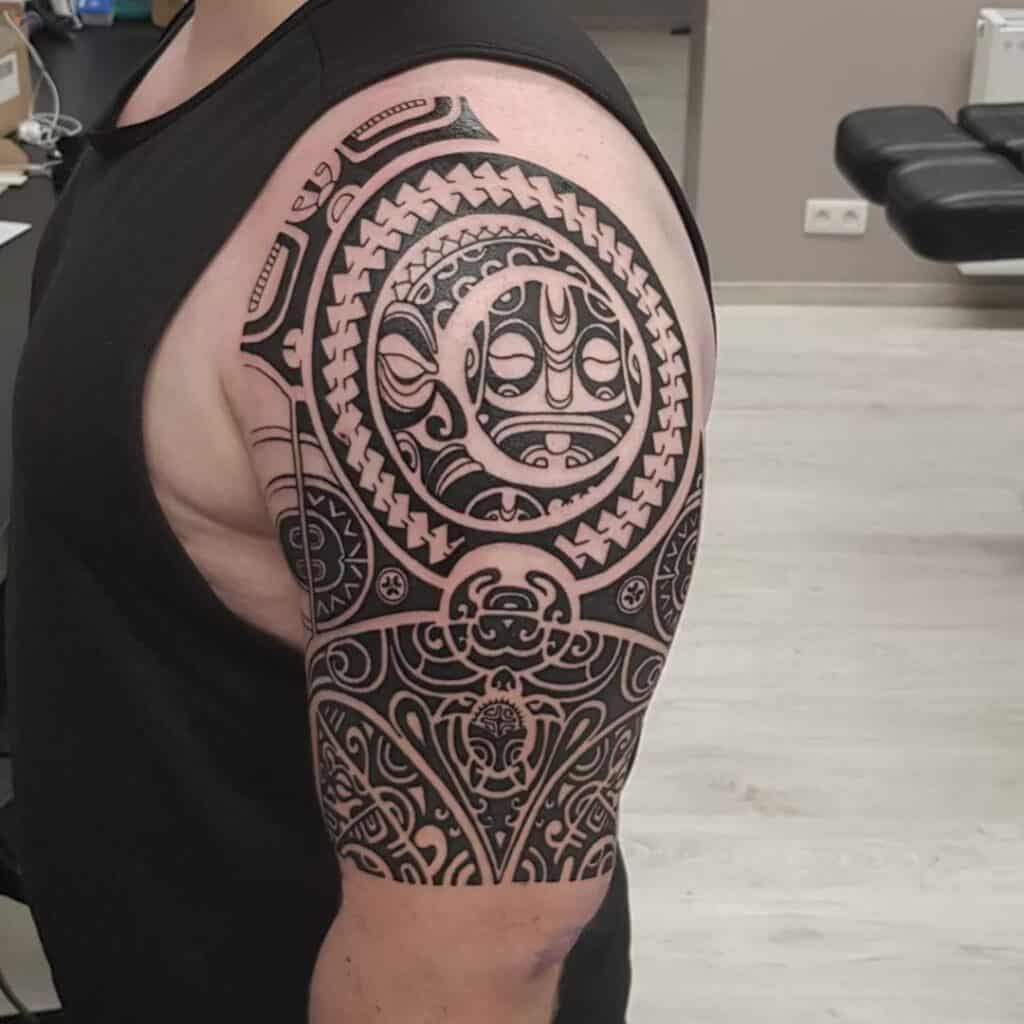

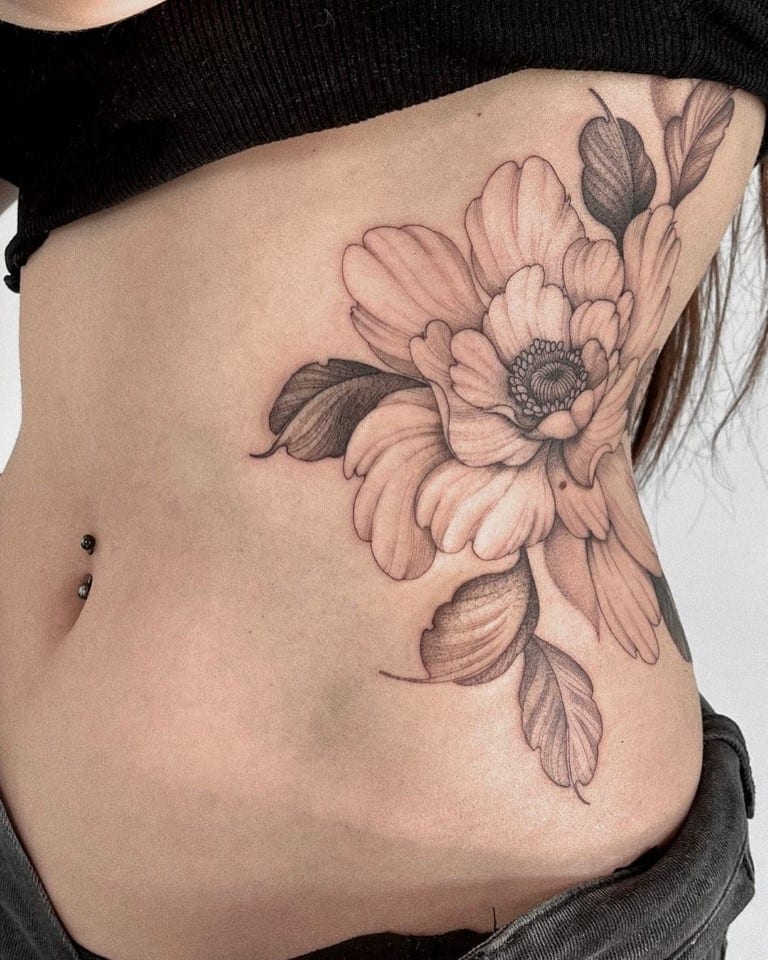
Pingback: Getting into the tattoo industry, HOW TO: get a tattoo apprenticeship and why it's necessary - tattoogenda.com